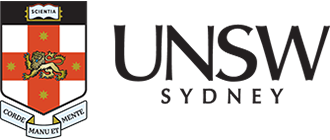Associate Professor Binghao | Professor Serkan Saydam | Associate Professor Simit Raval
Sensors for safety in extreme environments

Harnessing the power of the Internet of Things in mining is improving the future of the industry. Technology developed by UNSW’s Associate Professor Binghao Li, Professor Serkan Saydam and Associate Professor Simit Raval from the School of Minerals and Energy Resources Engineering, is informing and transforming the industry through the Mine internet of Things (MIoT) – making the sector safer, smarter and more efficient.
Miners are unable to rely on GPS systems while underground. The need for a new type of communication system is extremely important. “There’s no simple way to accurately map areas, especially when they’re constantly changing with evolving geometry,” explains A/Prof. Raval. “We need to be able to measure and track movement correctly.”
As part of creating a solution, the trio have formed a research group called the Mine Internet of Things (MIoT).
“This research really is needed because the underground environment makes communications and internet activities much more difficult,” explains Professor Saydam.
The group has developed an innovative underground collision avoidance technology, which focuses on vehicle-to-vehicle interaction, as well as vehicle-to-worker contact. “When any accident happens underground it can end in serious consequences,” says A/Prof. Li. “What we’ve developed is an ‘ultrawide band’ based collision avoidance system that can save lives and improve efficiency. MIoT and automation will ultimately remove as many workers as possible from unsafe underground scenarios.”
Explore an interactive model of the Roobuck-UNSW Collision Avoidance System that uses Ultra-Wideband technology to improve underground mine worker safety.
It works by attaching sensors to underground vehicles, as well as the cap lamps of mine workers. The technology then measures the range between vehicles and workers with an accuracy of 10cm, ensuring less collisions and accidents. “When one is too close to the other, an alarm goes off and alerts the worker or driver,” adds Prof. Saydam. “In the future we may even be able to stop the vehicle.”
What makes this research truly valuable is its accuracy for detecting potential collisions. “If you’re driving a Tesla on the surface, it recognises people and objects, but it’s very difficult underground because it’s an extreme environment,” explains Prof. Saydam.
Despite this challenge, the team have been able to create outstanding results regarding the accuracy of their sensors. “For such an extreme environment, it’s really amazing.”
Opportunities and challenges
While finding test locations to trial their technology has proven difficult at times, the team have an excellent working relationship with the Australian mining industry. “This research has been more difficult because you don’t want interruptions during your test,” explains Prof. Saydam. “You basically need to be allocated certain sections of the mine where you can do your research, and thankfully UNSW Engineering has an extremely good relationship and reputation with industry, which has helped.”
This groundbreaking work has been developed in collaboration with industry partner, Roobuck, who instantly recognised the need for this technology. “People have been asking for this type of solution for a long, long time but until now, no solutions have met the requirements,” adds A/Prof. Li. Not only have Roobuck tested technology with encouraging results – they already have potential customers overseas.
While A/Prof. Li and the team have already submitted a patent application, their research is not just limited to the mining industry. “Roobuck will have the exclusive license for mining applications, but we’ll extend it to other scenarios such as constrained environments like construction sites and ports.”
A/Prof. Binghao Li and Research engineer Kai Zhao in an underground mine in NSW. Image by: Daniel Ryan.
Beyond the underground
This technology also has domestic applications, in particular for those with impaired and low vision. “Ultra-wide band can be used for blind and visually impaired people’s navigation in indoor environments,” explains A/Prof. Li. “Starting with indoor positioning and indoor navigation, we use transmitters just like within a GPS satellite and if the user has a mobile phone and has a receiver, it can determine their position accurately and even tell them where to go.”
In creating the collision avoidance technology for mining, the team have transformed the industry, making it safer, smarter and enabling more efficient practices.
“Australia has always been at the centre of mining innovation globally, so this type of research is enabling us to continue being at the forefront,” adds A/Prof. Raval.
On the ground at UNSW, this research is also providing countless opportunities for future students and collaborators within this space. “It’s an amazing research topic that attracts a lot of students because it’s so multidisciplinary,” says Prof. Saydam. “There is a huge skills shortage, and this type of research is addressing the need to bring people from other disciplines into the mining industry.”
Share this story
Digital Transformation
Read more
Get in touch and see what’s possible.
Ask how we can help your business, industry, or market through collaboration.



